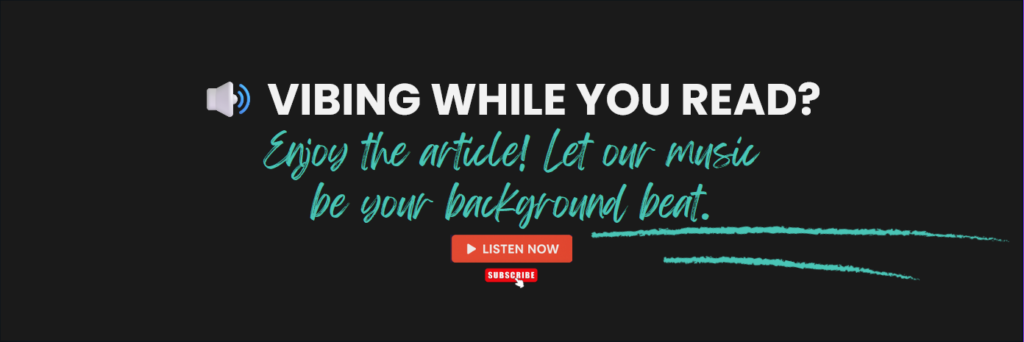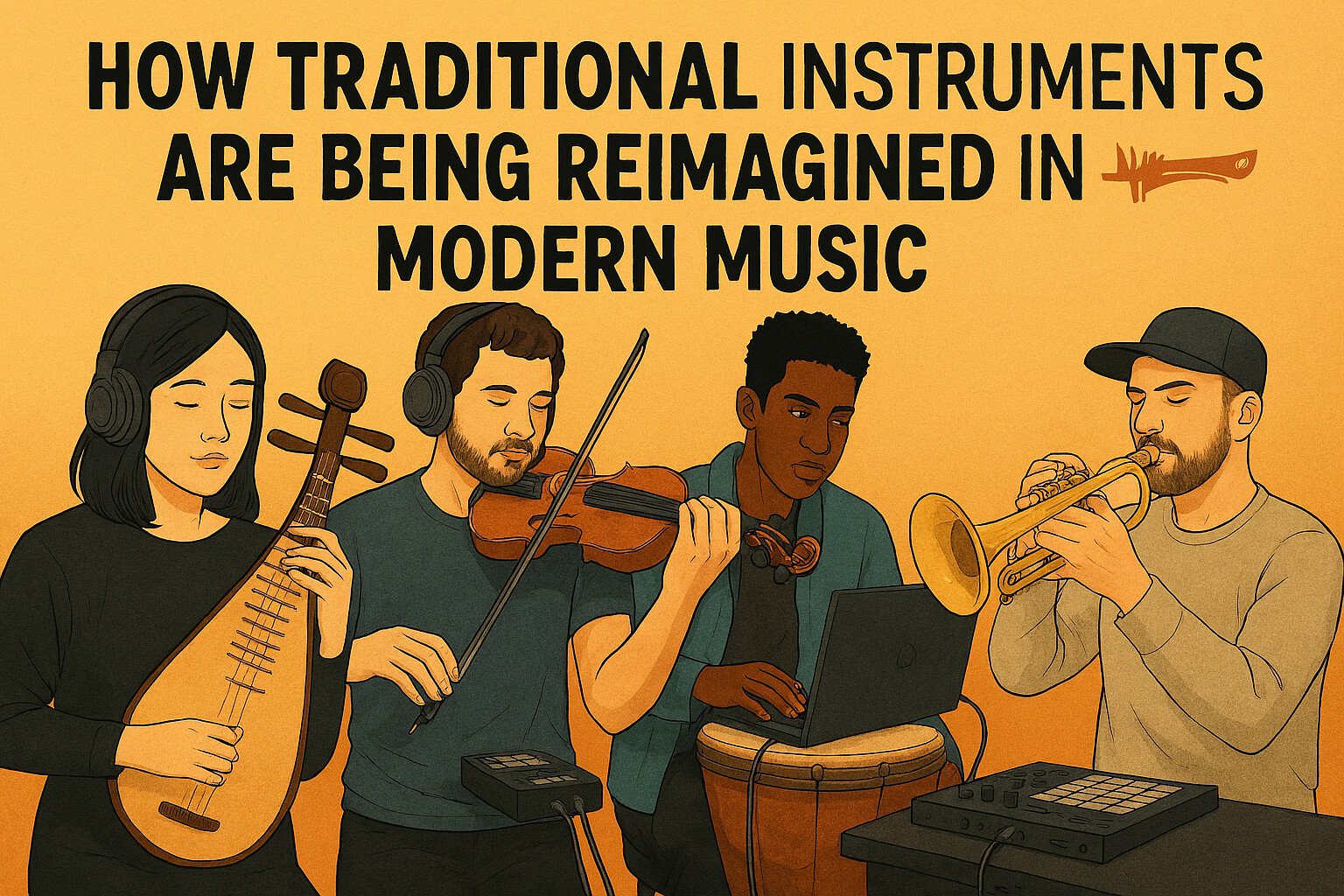
Music has always been an evolving art form, constantly shifting and adapting to the cultural landscape. Over the past century, we’ve seen the rise of electronic music, digital production, and genres that rely heavily on synthesized sounds. However, despite all these advancements, traditional instruments are far from obsolete. In fact, in today’s music scene, they are being reimagined in creative, unexpected ways—blending the old with the new. From the soulful strings of the violin to the deep hum of the sitar, traditional instruments are experiencing a resurgence, and artists across genres are finding fresh ways to incorporate them into modern music.
In this article, we’ll dive into how these instruments are being reinterpreted, how musicians are pushing the boundaries, and why they remain as relevant as ever in a streaming-dominated, tech-driven industry. So whether you’re a fan of orchestral soundscapes, experimental beats, or lo-fi hip-hop, keep reading to discover how the past is shaping the future of music.
The Resurgence of Traditional Instruments in Pop Music
One of the most noticeable trends in recent years is how traditional instruments have found their way back into pop music. It’s no longer just about synthesizers and 808s—artists are blending acoustic and electronic elements to create something new. A perfect example of this is Billie Eilish’s When We All Fall Asleep, Where Do We Go?, where she incorporates the ukulele, not as a standalone folk element, but intertwined with electronic beats and eerie soundscapes. The result is a fusion that feels innovative yet organic.
Similarly, artists like Ed Sheeran and Taylor Swift frequently turn to acoustic guitar and piano in their tracks, grounding their otherwise modern sound with traditional instruments. For Sheeran, his signature loop pedal performances have popularized the idea of taking something as timeless as a guitar and reworking it with tech to create a fuller, more dynamic sound. It’s proof that traditional instruments can evolve alongside technology to stay relevant.
Hip-Hop and Classical Fusion: A New Era
One genre that has notably embraced the use of traditional instruments is hip-hop. While it’s easy to think of hip-hop as driven purely by beats and bass, many modern tracks incorporate classical instruments in unexpected ways. Take Kanye West’s Late Registration, which saw Jon Brion’s orchestral arrangements lend a cinematic feel to tracks like “Gone” and “Diamonds from Sierra Leone.” This blending of genres allowed Kanye to elevate his sound by combining the street-savvy grit of hip-hop with the grandeur of classical music.
Fast forward to today, artists like Kendrick Lamar and Nas are doing the same, introducing orchestral arrangements to add depth and emotion to their tracks. For instance, Kendrick’s live performance of To Pimp A Butterfly at the Kennedy Center featured a full orchestra, bringing his already powerful music to new heights. This is where the modern interpretation of traditional instruments truly shines, as they bring a sense of storytelling and drama that purely electronic elements can’t always achieve.
Electronic Music and the Return to Roots
Electronic music has long been synonymous with artificial sounds, but over the last decade, there’s been a movement toward incorporating more organic elements, including traditional instruments. Artists like ODESZA and Bonobo are prime examples of electronic producers who have turned to live instruments—drums, strings, horns—to create more textured and dynamic soundscapes.
Bonobo’s Migration album is a masterclass in this blending of live instrumentation and electronic production. The track “Kerala” features Indian-inspired percussion and strings that give it a global, earthy feel despite its electronic base. This is a clear example of how traditional instruments are being reimagined in a way that feels innovative, showing that you don’t have to abandon the old to make something fresh.
World Music: Crossing Borders and Genres
When we talk about traditional instruments, we can’t forget the global music scene. Instruments like the sitar, djembe, and guzheng are making appearances in genres where they traditionally wouldn’t have been used. World music is influencing everything from pop to electronic, with artists sampling and blending sounds from around the globe.
One artist at the forefront of this trend is Anoushka Shankar, who has successfully bridged Indian classical music and modern genres. Her sitar work can be heard in collaborations with electronic artists like M.I.A., where traditional Indian music collides with futuristic beats. This fusion not only brings attention to traditional instruments but also broadens the horizons for modern music, creating a cross-cultural dialogue that resonates with global audiences.
The Role of Technology in Reimagining Traditional Instruments
As music evolves, so do the ways in which musicians interact with their instruments. The rise of digital audio workstations (DAWs) and MIDI technology has allowed traditional instruments to be reinterpreted in ways that were once unimaginable. By recording an instrument like a violin or flute into a DAW, producers can manipulate the sound—stretching, distorting, or looping it—until it’s unrecognizable from its original form.
For example, in lo-fi hip-hop, producers often sample old jazz or classical records, cutting and rearranging snippets of saxophones, pianos, and guitars to create chilled-out beats. The result is a sound that’s both nostalgic and modern, breathing new life into older genres through the lens of modern production techniques. Artists like Flying Lotus and Nujabes have mastered this art, demonstrating that you can take something as traditional as a grand piano and flip it into something completely fresh.
Social Media and the Global Stage for Traditional Instruments
With platforms like TikTok, Instagram, and YouTube, we’ve seen the rise of musicians showcasing traditional instruments to new audiences. Viral videos of musicians playing the harp, didgeridoo, or cello in unconventional ways have attracted millions of views, proving that these instruments still captivate listeners in a world dominated by synthesized sounds.
A great example is the rise of instrumental covers of popular songs. Musicians like 2Cellos have gained huge followings by covering rock and pop anthems with classical string instruments, appealing to both fans of traditional music and modern hits. This trend of reinterpreting popular tracks using traditional instruments has breathed new life into both the music and the instruments themselves, showing how versatile they can be.
The DIY Movement: Musicians Taking Control
Another significant factor in the reimagining of traditional instruments is the rise of the DIY (do-it-yourself) movement in music. With affordable recording equipment and software available, artists no longer need to rely on big studios or producers to create high-quality music. This has given rise to a generation of musicians who are experimenting with traditional instruments in new ways, often blending them with electronic beats, loops, and samples.
Artists like Jacob Collier, known for his mind-blowing multi-instrumental arrangements, are pushing the boundaries of what’s possible with traditional instruments. Collier’s use of everything from pianos to guitars to exotic instruments like the dulcimer, combined with his technical mastery of recording software, allows him to create music that feels both timeless and futuristic. His success showcases how traditional instruments can still be at the cutting edge of music when paired with modern techniques.
What This Means for the Future of Music
So, what does the future hold for traditional instruments in modern music? If the trends we’re seeing continue, it’s likely that the line between electronic and acoustic will blur even further. The increasing accessibility of music production tools means that more artists than ever before are experimenting with new sounds, and traditional instruments will continue to play a role in that evolution.
It’s clear that while the music industry is constantly changing, traditional instruments aren’t going anywhere. Whether they’re being used in classical compositions, experimental electronic tracks, or viral TikTok covers, their versatility and emotional depth make them invaluable to musicians across all genres. In many ways, traditional instruments are a bridge between the past and the future of music, and their reimagining is a testament to the ever-evolving nature of the art form.
Conclusion: A Harmonious Blend of Old and New
In the end, the reimagining of traditional instruments in modern music is not just a trend—it’s a reflection of music’s endless potential for reinvention. As technology continues to advance, we’ll undoubtedly see more exciting ways that traditional instruments are used to create new sounds. Whether it’s through blending genres, incorporating global influences, or using cutting-edge tech, traditional instruments will remain a crucial part of music’s future.
So, whether you’re jamming out to a lo-fi beat that samples a 1920s jazz recording or watching a viral video of someone shredding a violin to a rock song, remember that traditional instruments are far from old news—they’re being reborn every day. Keep listening, keep exploring, and who knows? The next big sound might just come from an instrument that’s been around for centuries.



1 comment
Ts lowkey lit